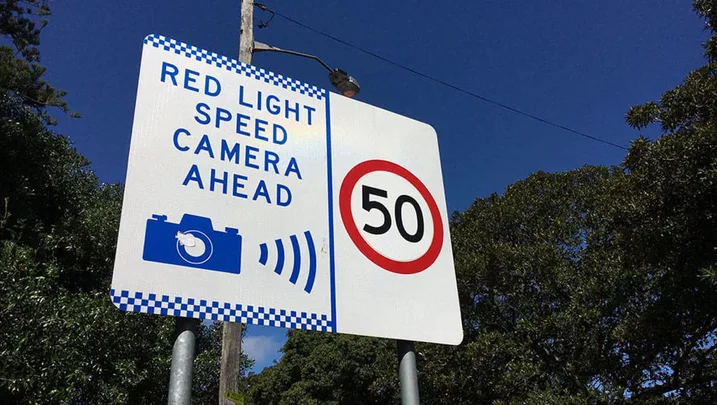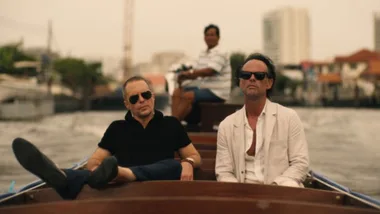The law, famously, is an ass, but when it comes to speed cameras, it’s a differently shaped ass – although still a stinky one – depending on which State you live in.
In NSW, for example, the authorities believe speed cameras should be used to slow people down at black spots. Recently appointed Minister for Roads Melinda Pavey, says people don’t like the “sneaky” approach of hiding cameras and they are more effective if they are located, and clearly marked, at black spots, thus forcing people to slow down.
NSW State Governments have, in the past, suggested they would only put cameras in known black spots, but then they went and put them in the Lane Cove Tunnel before it had even opened, somewhat defying their own logic.
The incredible thing about those tunnel cameras, however, is that despite being clearly signed and very easy to avoid being caught by, the Lane Cove and Cross City Tunnel devices are all among the State’s top 10 revenue earners.
People in NSW, clearly, are not making the most of the advantages they’re being given.
Residents of Victoria, commonly known as the Police State, are treated with a different approach, according to Road Safety Camera Commissioner John Voyage, who says he doesn’t understand the NSW approach at all.
“I don’t understand the psychology, because the limit is the law, and trying to drive around speed cameras is simply flouting the law,” Mr Voyage says.
“If people don’t know where the cameras are, they have to assume they could be anywhere, and then they have to stick to the limit at all times.
“It’s best if people just stick to the legal speed, but somehow someone’s always calling it revenue raising. You just can’t please the populace.”
Mr Voyage, as his title suggests, is a great believer in “road-safety cameras”, doesn’t understand why people think they’re for revenue raising and says they are proven to work.
“If you look at the top revenue-raising camera sites and you follow the graph of how many infringements occur, they all have a graph the same shape – it starts off high and tails off, some more quickly than others, because people learn to slow down there,” he says.
Despite that claim, Mr Voyage says the number-one earner in Victoria, issuing 12,862 fines in just three months between July and September last year, has been “the champion intersection” for years.
“It’s at Chadstone, on Warrigal Road, near a railway line and a TAFE, it’s a nice road, people come from a 70 zone to a 40 zone there, and they struggle to comply,” he says, tut-tutting to himself.
So, a camera that people don’t know is there, located at a point where the limit drops from 70 to 40, and it rakes in more fines and revenue than the 26-camera system at five sites along the Hume Freeway? Doesn’t sound like a revenue-raising trap at all.
While Victoria has fixed cameras, mobile ones and new point-to-point cameras as well, other States choose between a mix of fixed and mobile devices. What doesn’t change between States is that they all issue a huge number of fines.
Here are the top 10 in your State.
NSW
Fixed cameras in NSW, all of them clearly signed and hard to miss, raked in a staggering $19,729,115 in the financial year 2014-15, with one camera alone – on the Eastern Distributor, Northbound, at Darlinghurst – taking $3,867,598.
Top 10 cameras – 2014-15:
- Eastern Distributor, Northbound, Darlinghurst
- Cross City Tunnel, Westbound, East Sydney
- Botany Road, Southbound, Rosebery,
- Cleveland Street, Eastbound, Moore Park
- Lane Cove Tunnel, Westbound, Lane Cove
- Lane Cove Tunnel, Eastbound
- Hinterland Way, Northbound, Ewingsdale
- M5 Motorway, Westbound, Arncliffe
- Woodville Road, Southbound, Chester Hill
- William Street, Westbound, Darlinghurst
State government raised more than a billion dollars from speeding fines, with almost $700 million raised in 2014 and 2015 alone
Herald Sun
Victoria
The one statistic that defines the approach to enforcement in Victoria, and which must make it a difficult and depressing place to live, is that one motorist is now being fined for speeding in the Police State every 20 seconds.
Over the past three years, according to the Herald Sun, the State government raised more than a billion dollars from speeding fines, with almost $700 million raised in 2014 and 2015 alone.
Victorian authorities can’t get enough of speed cameras, or the revenue they generate, and they are now hoping to introduce new high-tech versions which can snap straying motorists across eight lanes of moving traffic, in both directions, simultaneously.
Current, lazy cameras can only shoot one speeding car in one lane, travelling in one direction at a time. The next billion dollars, clearly, will pour in a lot faster.
Top 10 cameras – October- December 2015:
- Warrigal and Batesford Roads intersection, Chadstone — 16,354 fines and $3.8m raised between October and December, 2015
- Fitzroy Street and Lakeside Drive, St Kilda
- Princes Freeway, Point Cook, Forsyth Road Bridge, Geelong bound
- Princes Freeway, Hoppers Crossing, Forsyth Road Bridge, Melbourne bound
- Exhibition and Victoria Streets intersection, Melbourne CBD
- Flinders and William Streets intersection, Melbourne CBD
- Princes Freeway, Lara, Avalon Rd Bridge, Melbourne bound
- Maroondah Highway, 100m west of Hutchison Street, westbound, Lilydale
- Burke and Old Burke roads intersection, Kew East
- Western Ring Road, 1.6km west of Sydney Road, Broadmeadows
Queensland
In terms of fixed cameras, Queenslanders seem to be almost as fond as speeding past them in tunnels as lead foots in New South Wales.
The State’s top-earning fixed camera was in Brisbane’s Legacy Way Tunnel in 2015, catching almost 100 people a day in its first year.
Here are the top 10 earners in Queensland:
- Legacy way Tunnel, Brisbane (36,092 fines in 2014-15)
- Gold Coast Highway, Broadbeach
- Pacific Motorway, Loganholme
- Main Street, Kangaroo Point
- Clem7 Tunnel, Brisbane
- Airport Link Tunnel, Brisbane
- Gold Coast Highway, Southport
- Nathan Street, Aitkenvale
- Pacific Motorway, Gaven
- Bruce Highway, Burpengary
The Queensland authorities also love their mobile cameras and have 3700 approved sites around the State in which they can use them.
The worst road to drive down in the State is Old Cleveland Road, Brisbane, which has 19 approved camera sites along one 22km stretch.
The State’s notorious Bruce Highway has no less than 430 approved mobile speed camera sites, or one every four kilometres.
Western Australia
The roads in WA are covered by both fixed and mobile speed cameras, but ask any local and they’ll you it’s the mobiles ones, which look like little robotic tripods, that are proliferating.
Mobile-camera location are also published online every week (between 40 and 50 of them a day), in newspapers, and are broadcast on radio stations.
Officially, the Western Australia Police are happy for drivers to be aware of “most” speed camera locations, “to encourage them to slow down and try to prevent a serious or fatal collisions”. They are all, allegedly, in “high-risk” locations “to prevent speed and red-light offences.”
Mobile-camera location are also published online every week (between 40 and 50 of them a day), in newspapers, and are broadcast on radio stations. So as long as you spend half an hour planning your route every day before you leave home, you’ll be fine.
The State Government announced in July last year that it would be installing another 25 fixed speed cameras at “yet-to-be determined locations,” in Perth, adding to the five currently on the Mitchell and Kwinana freeways. And that point-to-point cameras – which measure your speed over a certain distance and then post you a fine if your average is too high – would also reportedly be operating in the city within the year.
The simple fact is, it’s hard to know what the top 10 locations for revenue raising cameras are in WA, because they are always on the move (and often hidden behind bushes or trees), but here is a list of the fixed-site cameras in Perth. So far.
Fixed cameras in Perth:
- Roe Highway, Beckenham
- Great Eastern Highway, Burlong
- Graham Farmer Freeway, Burswood
- Roe Highway, Willetton
- Kwinana Freeway, Como
- Mitchell Freeway, Innaloo
- Kwinana Freeway, Murdoch
- Mitchell Freeway, Stirling
South Australia
Adelaide’s South Eastern Freeway is the top revenue earner in the whole state, having reaped more than twice as much money than the State Government expected/hoped for, in their first three years of operation.
After being turned on in 2013, the two cameras took in $18 million in fines, and so far pleas to improve speed-limit signage to help people avoid the cameras have fallen on deaf ears.
The main thrust of the South Australian approach, however, is to use mobile-speed cameras, so people never know when they might get booked.
Revenue from those cameras has risen almost 50 per cent – up to $26.2m – in the past four years, with almost 1300 locations in use in 2014-15.
Almost all of the State’s most lucrative locations for mobile cameras (18 of the top 20) in 2015 were in residential areas, with speed limits of 50km/h or less.
The top highest-revenue-earning mobile camera locations in South Australia (2015 figures) are:
- Waverley Ridge Road, Crafers West ($659,153 in a single year)
- Main South Road, Old Noarlunga
- Grange Road, Grange
- Dashwood Road, Beaumont
- Frost Road, Brahma Lodge
- Battunga Road, Meadows
- Angas Road, Hawthorn
- South Terrace, Pooraka
- Chief Street, Brompton
- Tolmer Road, Elizabeth Park
Tasmania
Despite the fact there aren’t many of them, Tasmanians copped more than 5600 fines from fixed speed cameras in the State in 2015.
A list of the top-earning cameras in the State in 2015, published by The Advocate and sourced from Tasmanian Police, only lists nine, but helpfully points out that a 10th camera was to be installed soon, on the Midland Highway, north of Campbelltown.
Here are the top nine earning speed cameras in Tasmania in 2015:
- Brooker Highway, Rosetta (1970 fines)
- Tasman Bridge, Western Side
- Tasman Bridge, Eastern Side
- Southern Outlet, Tolmans Hill
- Brooke Highway, Comelian Bay
- Bass Highway, East Devonport
- Tasman Highway, Cambridge Park
- Southern Outlet, Kings Meadows
- Bass Highway, Wivenhoe
This article originally appeared on CarsGuide.










